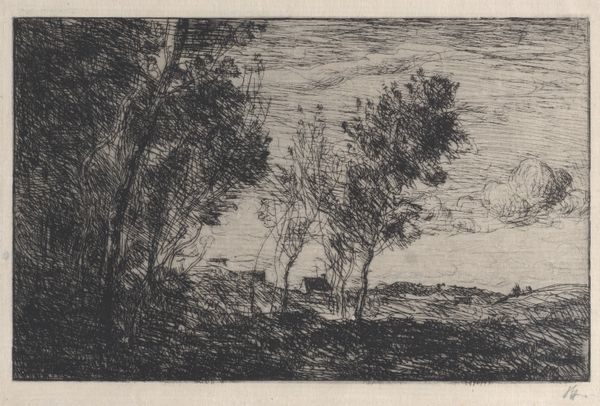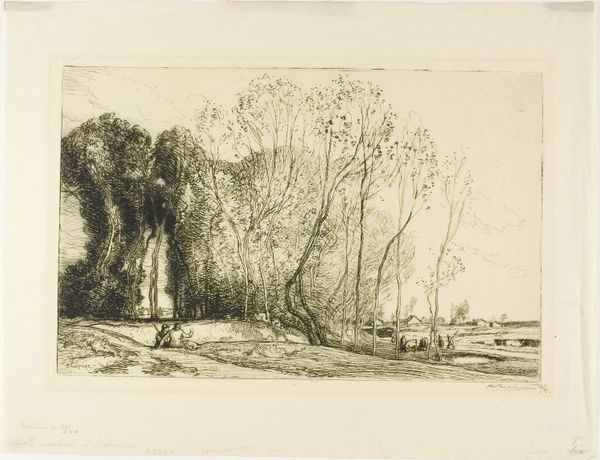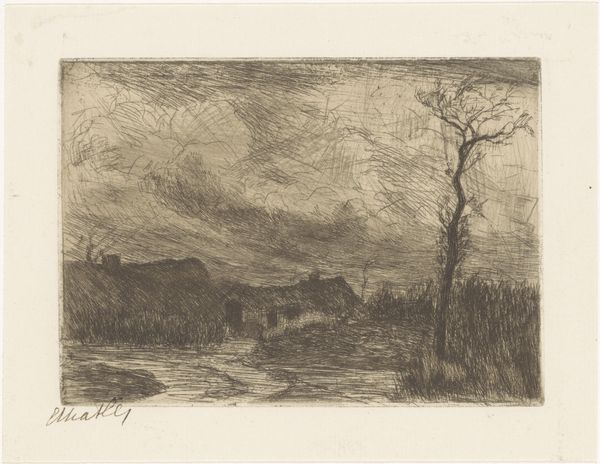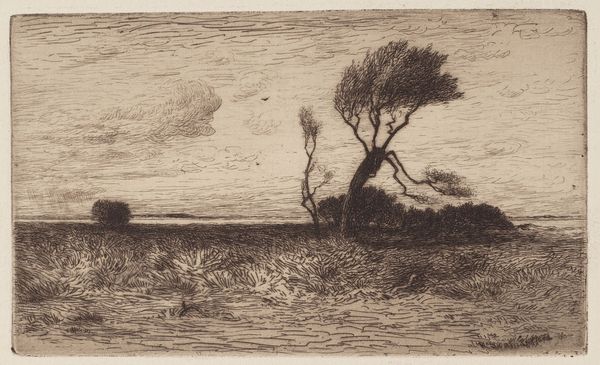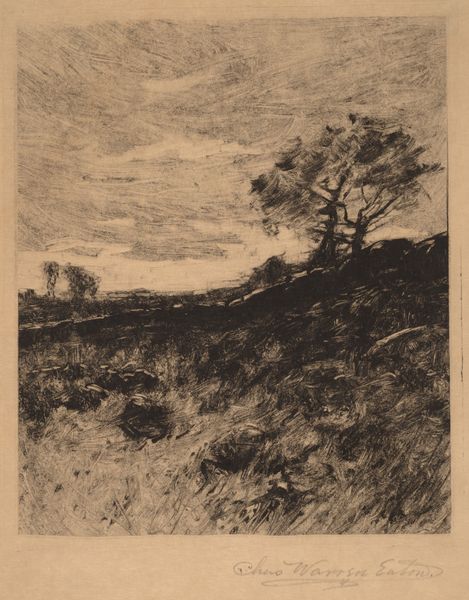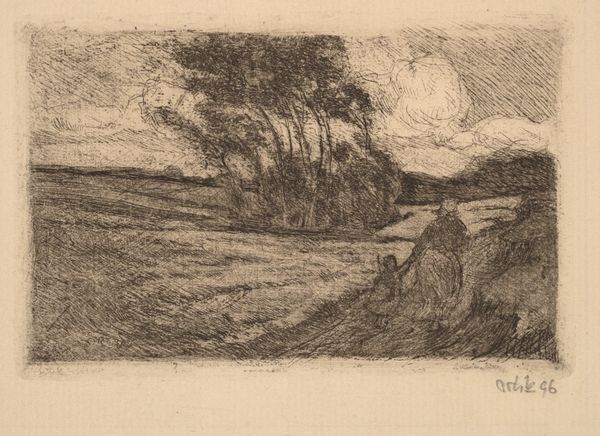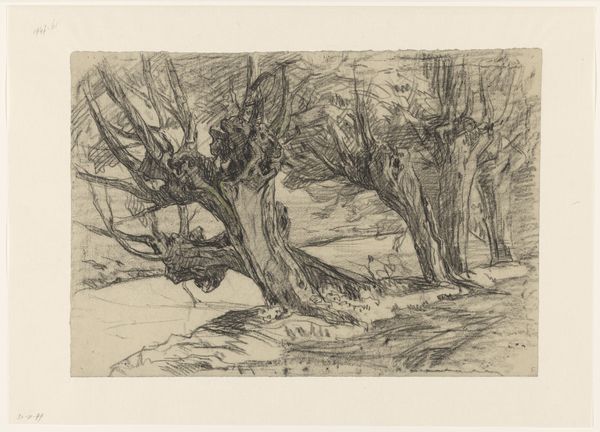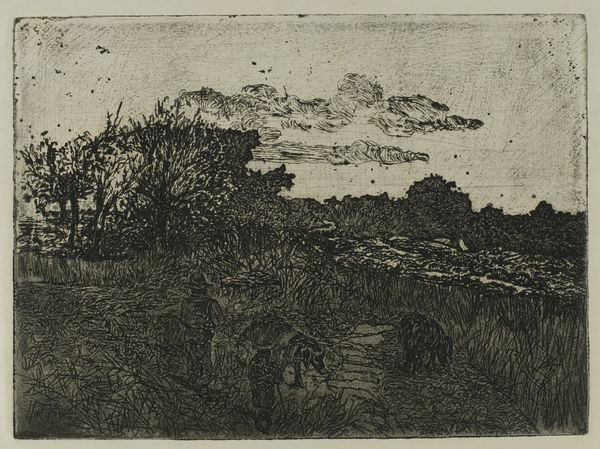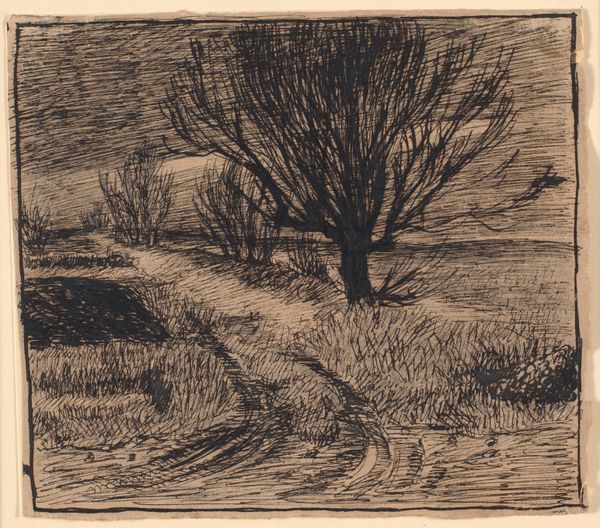
Souvenir of the Fortifications of Douai 1869 - 1870
0:00
0:00
drawing, print, etching, paper
#
drawing
# print
#
etching
#
landscape
#
paper
#
realism
Dimensions: 159 × 238 mm (plate); 192 × 313 mm (sheet)
Copyright: Public Domain
Curator: What an interesting landscape! I immediately feel the dynamism created by the etching’s contrasting values. Editor: Indeed! We are looking at Camille Corot's "Souvenir of the Fortifications of Douai," created around 1869-1870. This etching on paper, now housed at The Art Institute of Chicago, showcases Corot's mastery of capturing light and atmosphere. Curator: The way he uses the etched lines, varying the pressure and density, evokes such a wide range of textures and tonalities. Notice how the lines move and direct the eye through the piece, from the bright horizon across to the shadows near the base of the image? Editor: Absolutely. Consider also how Corot employed etching, a reproductive process which uses acid to bite into a metal plate, itself a laborious industrialized means of image production. And how this image, distributed as a print, relates to ideas of accessibility and the commodification of landscape? What relationship, if any, is being forged between nature, work and capital? Curator: While the social aspects interest me less, I can’t deny how powerfully the artist uses this material to evoke the feeling of wind rustling through those trees. It creates such an immersive experience; almost synesthetic. Editor: Corot lived and worked during a transformative time, and these images reflected shifting relationships to notions of progress, labor, and class. Landscape paintings have their own economies and were being shaped by industrial realities, regardless of whether they depicted modern cities or ostensibly timeless countrysides. Curator: I understand your perspective, but as an aesthetic object, this image thrives. His placement of those dark trees is strategically designed so as to contrast and complement the atmospheric lightness beyond them. Editor: The networks of production and distribution that made it available for consumption can hardly be ignored! It prompts thoughts about nature in an age defined by factories. Curator: Perhaps we’re both right, but, regardless, one has to acknowledge that it is very compelling, given its evocative use of light and shadow. Editor: Yes, a testament to art's place within an industrialized world, and a valuable piece nonetheless.
Comments
No comments
Be the first to comment and join the conversation on the ultimate creative platform.
